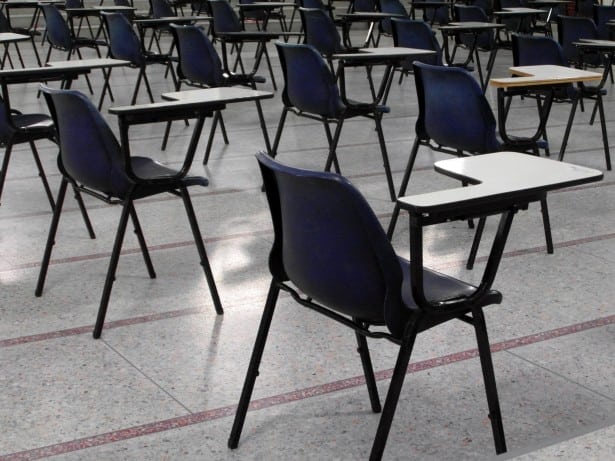How Educators Can Support Chronically Absent Students
About 16 million students are chronically absent — these rates are particularly high for students with disabilities and students of color

As teachers start their days, they know that they need to be ready for anything. My days typically begin by paying attention to the students who arrive early; I would often look at the clock and take note of the students who were not in my classroom. One morning, as the clock hit 8 o’clock, signaling the start of the school day, I realized that one student in particular, Michelle, would probably be absent for the eighth time this quarter and there were a lot of things that she would be missing that day. The day’s math lesson introduced the concept of graphing slope to students, making it impossible to access the next day’s lesson. “Maybe I can pull her aside during advisory tomorrow morning to get her up to pace before the lesson?” I thought to myself. While we could ideally find the time and space to make up the missed math lesson, there certainly wouldn’t be any way to make up for the fact that she would miss the class donut reward that afternoon, a special author visit, or spending recess and lunch with her friends.
Every day, teachers across the country focus not only on the work that they are about to undertake in their classroom but also must consider chronically absent students what additional supports they may need. Chronic absenteeism is a problem that every state faces and data suggests that as many as 16 million students are chronically absent — these rates are particularly high for students with disabilities and students of color.
Students with disabilities are especially prone to chronic absenteeism for a variety of reasons including medical conditions, frequent illness or long-term hospitalization, social ostracization, and disproportionately high rates of suspension. Students receiving special education services through an Individualized Education Program (IEP) have chronic mental or physical health conditions at nearly three times the frequency of their peers not in special education.
Additionally, students with disabilities receive exclusionary disciplinary consequences at higher rates than their non-disabled peers, with students of color at risk of higher rates than their white peers. For example, Black male students with disabilities are suspended twice as often as white males with disabilities, and three times as often as white females without disabilities. Suspension days are included in total absences, which contributes to higher rates of chronic absenteeism among students with disabilities students.
Experiencing chronic absenteeism is one of the first warning signs that students may be off-track to graduate high school, and is accompanied by a reduction in grades which is often followed by an increase in disciplinary consequences. Additionally, research suggests that the negative effects are greater on math than English, and is particularly damaging for social skills development. While the impacts of chronic absenteeism are felt across all grade levels, research suggests that it is particularly harmful for middle school students.
While chronic absenteeism among students with disabilities is a multi-faceted problem, there are several steps that teachers, schools, and policymakers can take to ensure students and families are supported throughout the process. First and foremost, punitive practices, such as suspending students or imposing civil penalties or fines against parents, are ineffective. Rather than imposing punishment, practitioners should focus on finding ways to collaborate with families to understand the barriers that are preventing students from attending school and ways that these can be mitigated.
For students with disabilities, IEP and 504 meetings can be an appropriate space to discuss any medical concerns that may be preventing the student from attending school and establish an appropriate plan for supporting the students’ needs. This can also be a space to talk about how the student is feeling at school and potentially address social concerns that may be impeding a student’s attendance, including the appropriateness of the student’s current placement. Recent research suggests that students receiving special education services who are included at least 40% of the day in the general education setting results in lower rates of chronic absenteeism. These concerns should be taken into account by all members of the IEP team when writing pertinent sections of the IEP including student goals, accommodations, and modifications.
Ultimately, supporting student attendance is best accomplished through proactive individualized supports. While Michelle continued to struggle with attendance for the remainder of the school year, there were many solutions that my co-teachers and I were able to implement to assist her. Among my fellow eighth grade teachers, we established a plan to assign me to be the point person for Michelle go to for missing work. If she missed school, her first day back she knew that she was to report to me at the beginning of recess to provide her with the materials from all her classes, answer any questions she had, and administer any quizzes or tests she had missed. This solution required collaboration from teachers as well as buy-in from Michelle herself. While she hated missing recess, she also hated being behind in school and welcomed the opportunity to complete the work she needed to improve in school. Despite the challenges in attendance, Michelle wanted what all students want out of a school day: to feel successful and spend time with people who care about her.